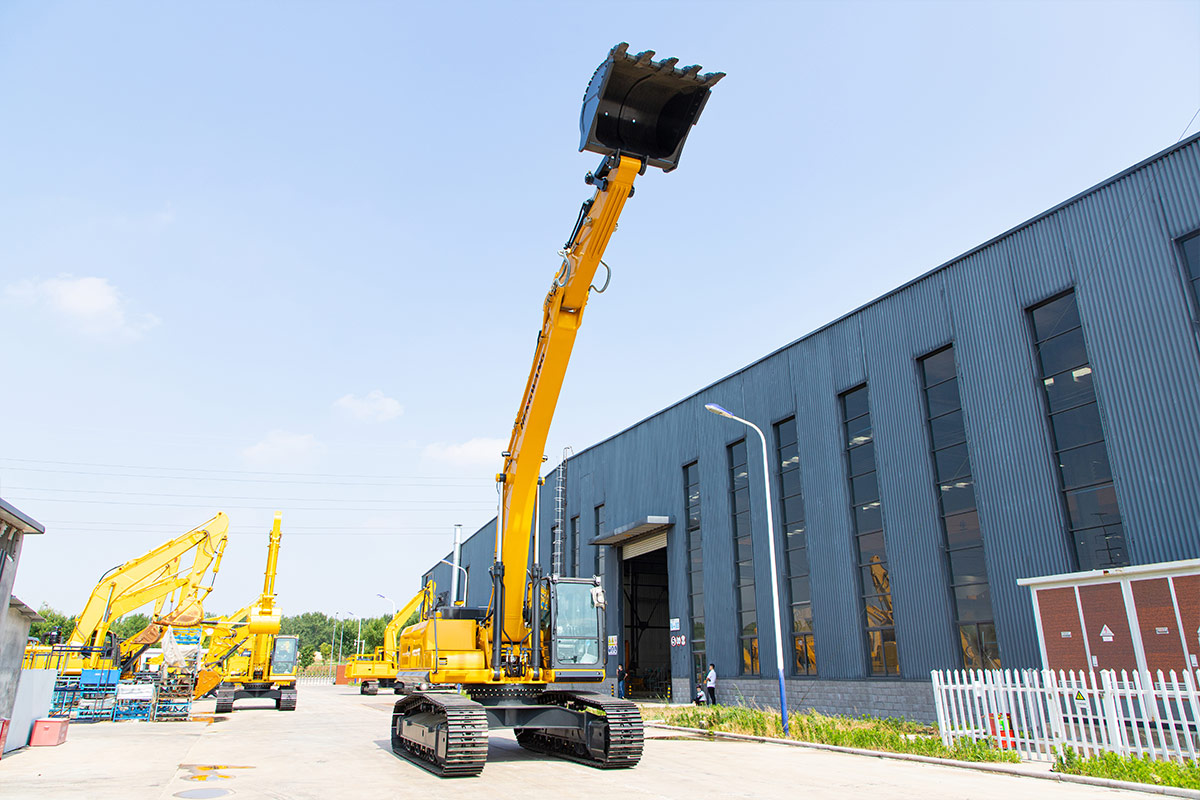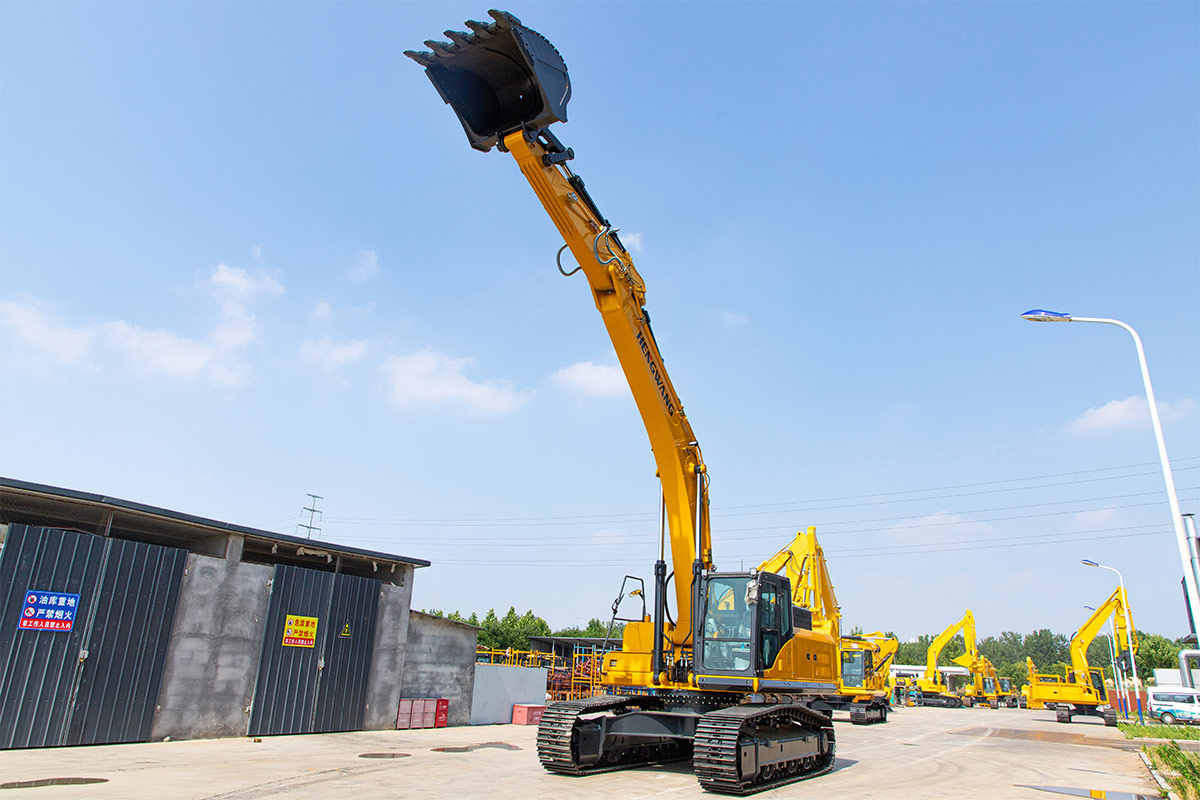Key points of excavator standardized operation safety management

1.Before the mechanical operation, it should be checked to confirm that everything is in good condition, that there are no obstacles in the large buttocks and the scope of the bucket and other personnel, and the operation can only be done after the whistle is issued. Protective covers should be installed in the excavator cab and in the external transmission parts.
2. When carrying out shovel operation, the working surface should not exceed the maximum excavation height and depth specified by the performance of the machine. During dragline or backhoe operations, the distance between the excavator track or tire and the edge of the operation shall not be less than 1.5m.
3. When the excavator is working on the flat ground, apply the brake track (or tire) to brake and wedge it firmly. There should be no obstacles in borrowing and unloading soil, and no one should stay within the radius of rotation of the bucket during excavation.
4. During the loading operation, it should be carried out after the transport vehicle is stopped. The bucket should be lowered as far as possible, and the vehicle should not be smashed. It is strictly forbidden to have people in the compartment, and it is strictly forbidden to pass the bucket from the top of the car cab. When unloading the soil, the bucket should be lowered as low as possible, but it should not hit any part of the vehicle.
5. The excavator is suitable for shovel excavation in clay, gravel, peat and other soils. It is forbidden to use any part of the excavator to break up rocks, frozen soil, etc.
6. When walking, the arm should be parallel to the crawler, and the slewing mechanism should be braked. The bucket should be 1m away from the ground. The walking gradient shall not exceed the maximum allowable gradient of the machine, and when going downhill, it is strictly forbidden to slide in neutral gear. Turning should not be too hasty, and padding should be reinforced first when passing through soft ground.

7. When the excavator is slewing braking, the slewing brake should be used, and the steering clutch should not be used for reverse braking. When fully loaded, it is forbidden to turn sharply and brake sharply, and the bucket must not rise and fall too violently during operation. When falling, do not impact the frame or crawler and other parts, and do not loosen the hoisting wire rope.
8. When working, you must wait for the body to stop before digging the soil. The bucket does not leave the working face, and it is not allowed to rotate and walk. The boom is not allowed to be lifted or lowered when the body is rotated or the bucket is under cutting.
9. When the dragline is operating, the bucket shall not continue to eat soil after the bucket is fully loaded, and shall not be overloaded.
10. When the driver leaves the operating position, no matter how long it is, the bucket must be dropped and the engine must be turned off.
11. Do not use buckets to lift materials. When abnormal operation is found, it should be stopped immediately, and the operation can be continued after troubleshooting.
12. When using an excavator to dismantle a structure, the operator should analyze the direction of the collapse of the structure, and leave a space for the collapse of the structure between the excavator cab and the dismantled structure.
13. After the operation, drive the excavator to a safe area, drop the bucket to brake the slewing mechanism, and place the joystick in the neutral position.
14. After the operation, the machine should be wiped clean. When working in winter, the body and the water tank must be drained (except for antifreeze), and the doors and windows should be closed and locked before leaving.
